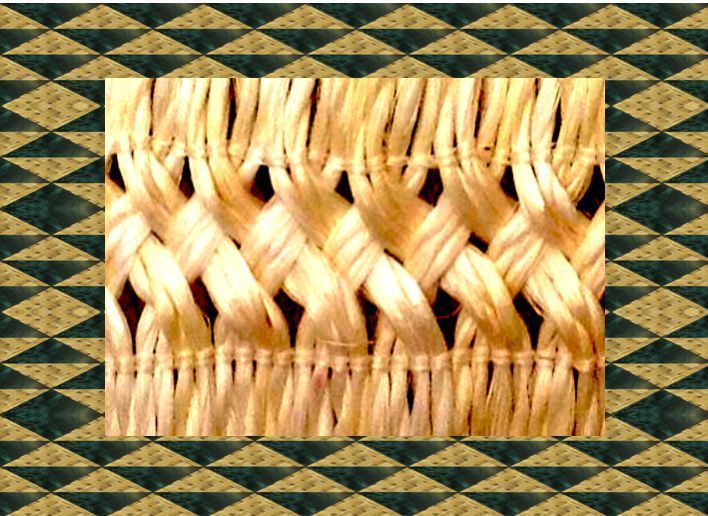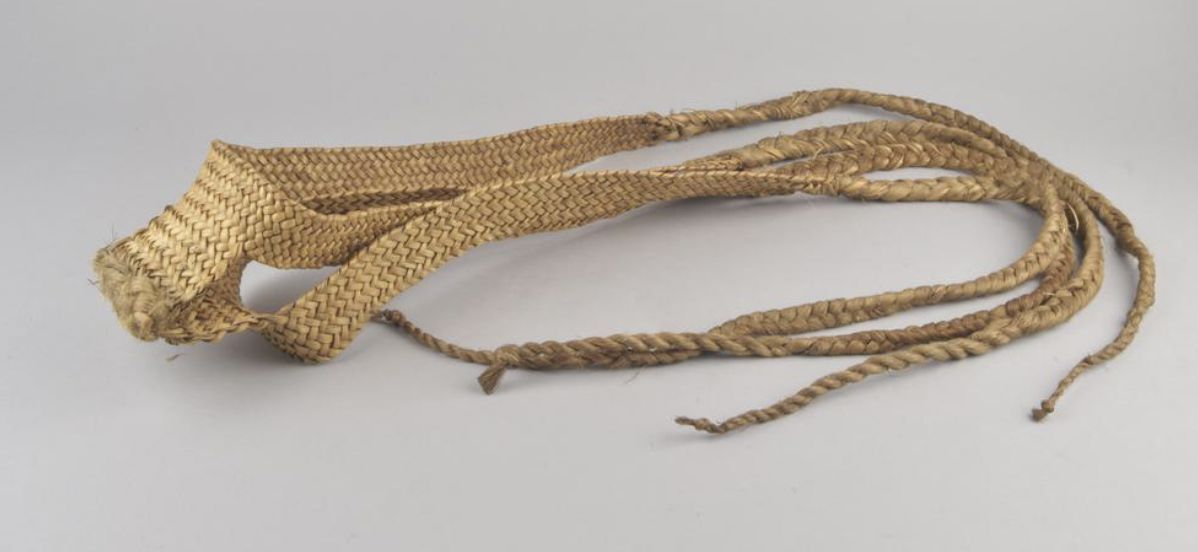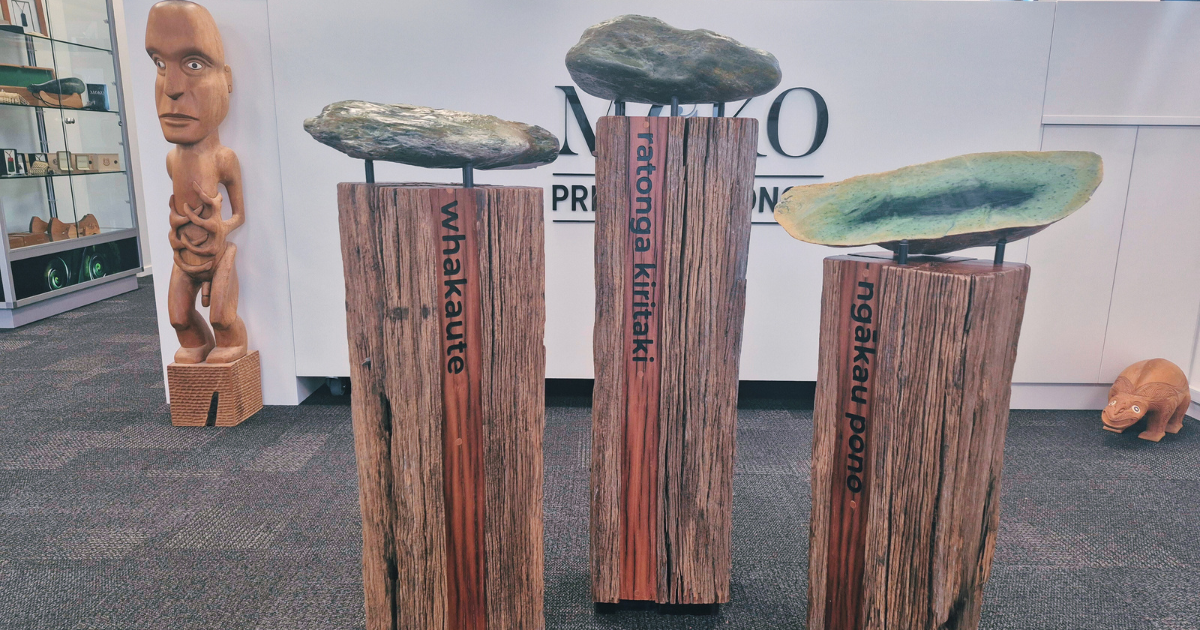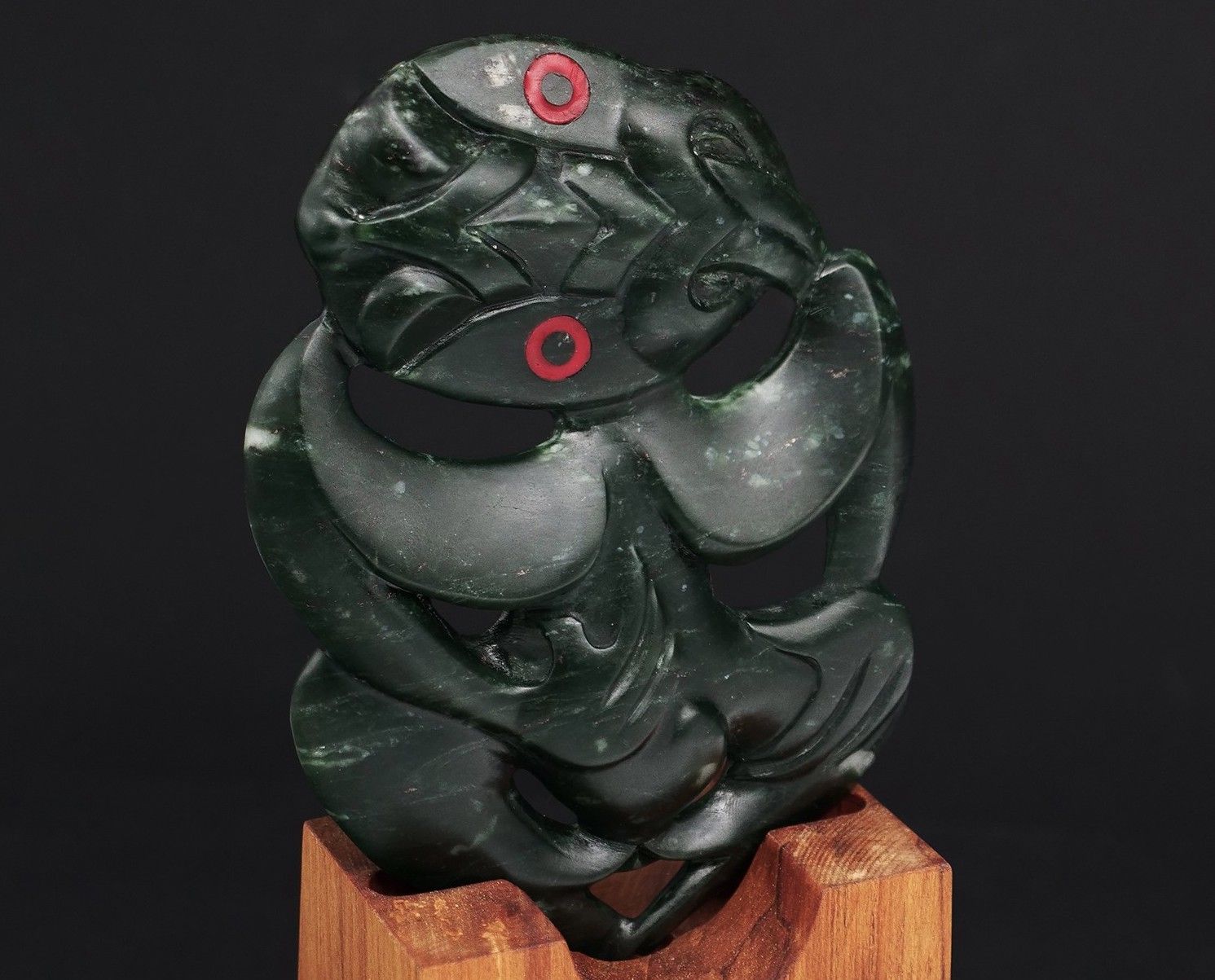
The House of Weaving Part 2: Tuatahi, Te Muka - First, The Muka
The chances are if you grew up in Aotearoa New Zealand, or at least went to primary school here, you will have made something out of harakeke (flax) before. Maybe a headband or a mat. You might have even tackled a small basket or kete.
My mother showed me how to make a bullwhip out of harakeke when I was ten or eleven. There was a massive harakeke that dominated the front lawn like a Pā. Many of the great tupuna leaves that surrounded the bush like a palisade were well over 2 metres long while the flower stalks where Tui clanged their authority with mixed results were longer still.
She’d made many things from that great clattering beast of a plant in the four or five years we’d lived on the farm since moving from a smaller holding just up the river. Kete mostly, of varying sizes depending on their intended use. A sun hat for herself that still gave her shade five years on. There were always two kete as smoko baskets for the workers plus a spare.
There might be half a dozen people or more working in the paddocks during the Season. The same number working at the sheds as well until more efficient ways of dealing with the harvest were developed. The farm produced tobacco as did just about every farm along the river for twenty miles or so.
The kete for smoko baskets had to hold at least two full thermos flasks of tea, 8 enamel mugs, a bottle containing milk, a jar of sugar and a cake tin or some other container big enough for 6 or 8 scones or whatever else mum decided to feed the crew.
The handles had to allow the kete to hang securely on a trailer post or some other handy appendage that would allow carriage out to the paddock or over to the sheds. Failing that, the handles had to function comfortably for whoever was given the job of carrying smoko out to the workers on foot because he wasn’t yet old enough to drive the tractor.
Mum also made kete for the garden and the house, general purpose carry-alls identical to those fashioned by her ancestors to carry kumara from the gardens of old. These items were all made using Raranga and Whiri techniques of Te Whare Pora and tupuna leaves from the great harakeke bush on the front lawn.
and it once had a stream that cut through the property on its way to the Motueka river that gave the Valley its name. The great harakeke would have grown on the bank of this stream, that disappeared not long after those settlers arrived.
First, the forests that grew to the riverside were cleared. Totara, Rimu, Matai. Kahikatea where swamps intervened. Harakeke and Kōwhai along the banks of creeks, streams and rivers.
Here and there on farms along the river, including our farm, small remnant stands of native bush remained behind testifying as to what had once been there.
Kereru, Ruru, Tui and Pīwaiwakawaka made good use of these old bush stands, as did possums, pheasants, quail and occasional geese descended from someones errant flock two generations gone. And of course, wherever swamp remained, the ubiquitous Pūkeko were there in numbers.

Māori living here in the Motueka Valley prior to Pākeha settlement would have much need of Raranga and Whiri techniques in particular to create the rourou - food baskets, kete - carry-all basketry and kawe - carrying straps for heavier loads.
The river was a great source of food. The forests as well were full of birds. Not to mention timber. The upper reaches of the river was known for Pakohe - the argillite prized for tool making. Important resources in quantity need something to carry them in. Timber needs ropes to haul.
Raranga and Whiri could make the baskets and straps of carriage and containment, the cords and ropes for binding and hauling. And more importantly still, the Motueka Valley followed the Western ranges for a while - towards Te Tai Poutini. It was part of a pounamu trail.
Generally speaking, weaving involves bringing together fibre threads of some description by means of twining, twisting, braiding, threading, knotting, stitching or some similar action, resulting in textiles of various kinds applicable to a multitude of uses. Usually these fibre threads will combine at right angles to each other.
Imagining this page as a woven example; vertical threads running from top to bottom [length] are known as warp. Threads running horizontal [width] are weft. Raranga means ‘to bring together’. The metaphor is unity. A Rangatira can be seen as ‘one who brings people together’. A leader. A unifier. Rangatahi are young Rangatira in a sense. We know raranga generally as an under - over type of hand weaving, usually of strips of harakeke, ‘bringing them together’ in a plaiting type of weave at right angles.
We have seen how skill, patience and an understanding of the material can yield both functional and attractive kete as essential items of life. Whāriki produces a similar but far more complex weave that works on the diagonal, and generally proceeds as a co operative group project; the finished result being finally patterned mats that by coming into being display all the discipline and kaupapa of Te Whare Pora, illuminating in the woven arts, the nature of human engagement with the universe.
Whiri is the technique of braiding fibres to produce threads, cords, bindings and ropes, creating belts and handles and strappings, hems and seams for some basketry. When mum made me the bullwhip, she used whiri techniques to do so, beginning with a braid of as many as a 8 or 9 long thin strips of harakeke leaf so that they formed a rope like chord that slowly narrowed towards the end and the ‘cracker’. Whiri uses a number of materials including muka [prepared harakeke fibre], harakeke strips, kiekie, ti kouka, certain vines and wool as soon as it became available.
Probably the most utilitarian of the weaving arts in terms of universal application, there is virtually no part of human existence that whiri does not bind to in some way, from the necklines of cloaks to the cord that hangs the tiki, hauls the net and binds the house together.
If Whiri provides a firm neckline and the means to keep the cloak in place, Whatu provides the fine clothed from the rau [leaf], firstly by a process known as haro; scraping away the cellulose layer usually with a mussel shell, then applying a patu muka [a stone mallet similar to a pestel, beating the revealed fibres on a stone ‘anvil’ ] and finally, a washing process [ unless pigments are desired in the final product ]. A muka thread can bind to another simply by twisting the ends together between your fingers, or rolling them under your hand along your thigh.
These longer cords can then be braided, knotted, twisted or plaited in so many ways, producing textiles and materials of great strength and beauty. Muka is the base thread that hangs the warp and patiently twists and twines the weft, one patient thread at a time.
It is also the knot that neatly, tightly conveys the Taniko pattern to the belt or the band or the patterned border of a cloak in Poutama, Niho Taniwha, Patiki or such combinations of these and many other striking designs that further enhance and elaborate by their simple aesthetic, balance and innate dignity the grace and mana of Te Whare Pora in the life, art and culture of Te Iwi Māori.

Moko Pounamu Knowledge Library




